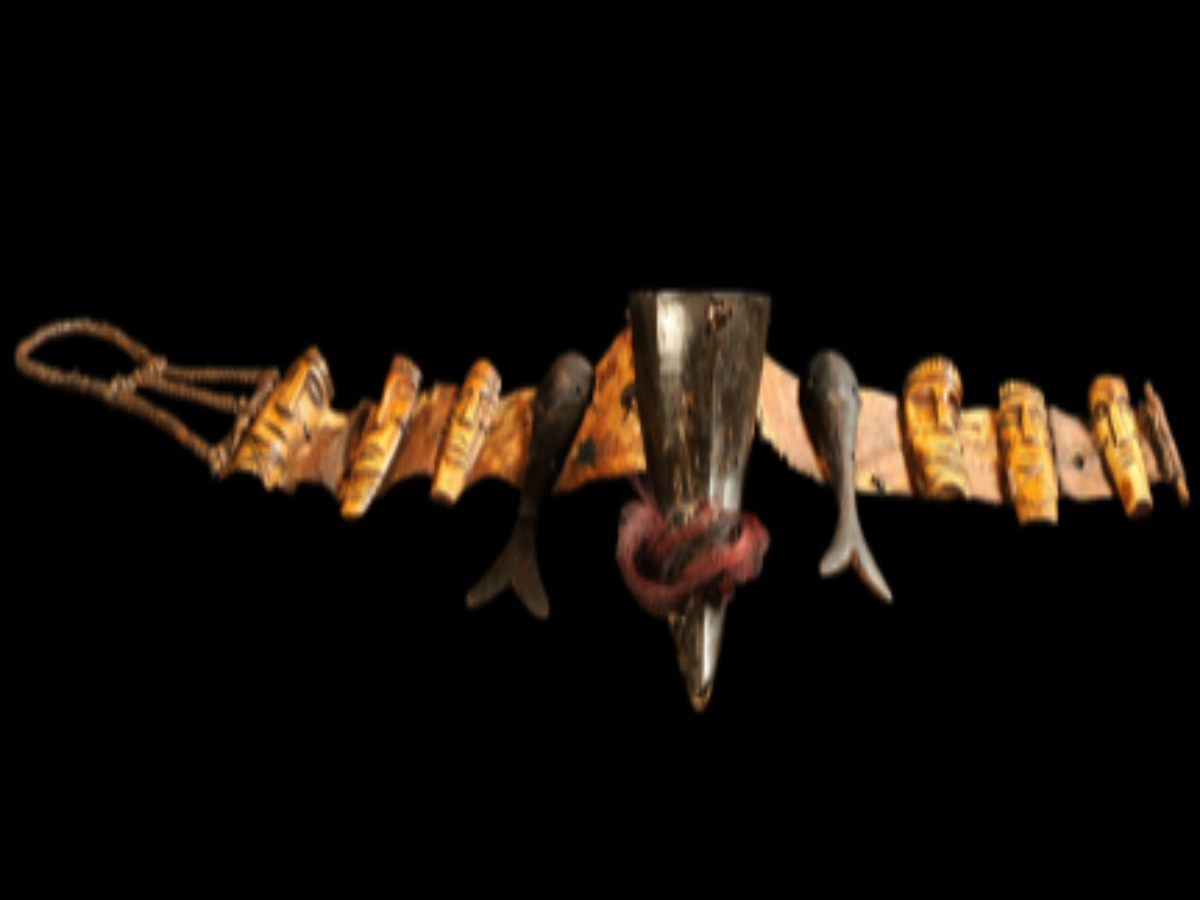State
Tribe Name
Art Type
short description
This finely and intricately done leather casket is a ceremonial and symbolic object of the Konyak Naga tribe of Nagaland in India. The Konyaks are proud of their warrior ancestry and artistic genius, and it passes to future generations in an unequaled heritage in beautiful artistry using natural materials such as leather, bone, wood, cane, and horn.The casket is entirely a composite work because it joins six carved faces made from the visual bone: two wooden faces stamped on the casket and two existing on canes like spits.
Thumbnail

Filter Postion
Left
Filter Background
Off
Theme
Filter Header Image

content
Image

description
This finely and intricately done leather casket is a ceremonial and symbolic object of the Konyak Naga tribe of Nagaland in India. The Konyaks are proud of their warrior ancestry and artistic genius, and it passes to future generations in an unequaled heritage in beautiful artistry using natural materials such as leather, bone, wood, cane, and horn.The casket is entirely a composite work because it joins six carved faces made from the visual bone: two wooden faces stamped on the casket and two existing on canes like spits.
The bone faces are provided with eyes, nose, and mouths carved with some intervening lines on their foreheads and lower jaws representing great artistry but could represent some spirits of ancestors or guardian warriors. The wooden faces are also inscribed and attached by cane strips, demonstrating the synergy of this tribe's craftsmanship into things of symbolic worth. In the center of this leather strap is a Mithun horn adorned with idlest hair, considered a sign of status and ceremonial significance among the Nagas. Cane handle on one end with straight stick made from wood at the other gives practical usage signs to this casket for carrying sacred objects or for ceremonial events. This casket is not merely a box but evokes a cultural statement in relation to Konyaks' beliefs about ancestry, strength, and the ultimate craftsmanship that makes one deserving of an identity and spirit connection.
The bone faces are provided with eyes, nose, and mouths carved with some intervening lines on their foreheads and lower jaws representing great artistry but could represent some spirits of ancestors or guardian warriors. The wooden faces are also inscribed and attached by cane strips, demonstrating the synergy of this tribe's craftsmanship into things of symbolic worth. In the center of this leather strap is a Mithun horn adorned with idlest hair, considered a sign of status and ceremonial significance among the Nagas. Cane handle on one end with straight stick made from wood at the other gives practical usage signs to this casket for carrying sacred objects or for ceremonial events. This casket is not merely a box but evokes a cultural statement in relation to Konyaks' beliefs about ancestry, strength, and the ultimate craftsmanship that makes one deserving of an identity and spirit connection.
Image Mode
landscape
promoted
On
Verified
Off
